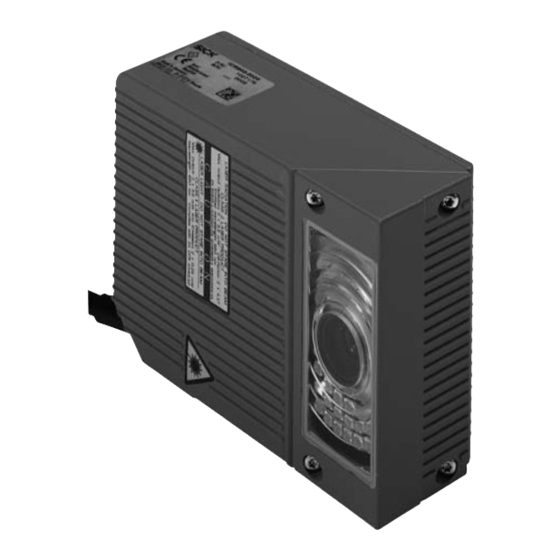
SICK ICR 84x Manuals
Manuals and User Guides for SICK ICR 84x. We have 1 SICK ICR 84x manual available for free PDF download: Operating Instructions Manual
SICK ICR 84x Operating Instructions Manual (182 pages)
Scanner family for reading 1-D and 2-D codes
Brand: SICK
|
Category: Barcode Reader
|
Size: 3 MB
Table of Contents
-
-
Intended Use15
-
-
Design19
-
-
-
-
-
Power Supply43
-
6 Operation
55 -
7 Maintenance
101 -
-
Error Messages104
-
Troubleshooting106
-
SICK Support117
-
9 Technical Data
119 -
10 Appendix
125 -
-
System Messages126
-
-
Auxiliary Tables151
-
-
Accessories164
-
10.12 Glossary169
-
10.14 Index176
-
Advertisement
Advertisement
